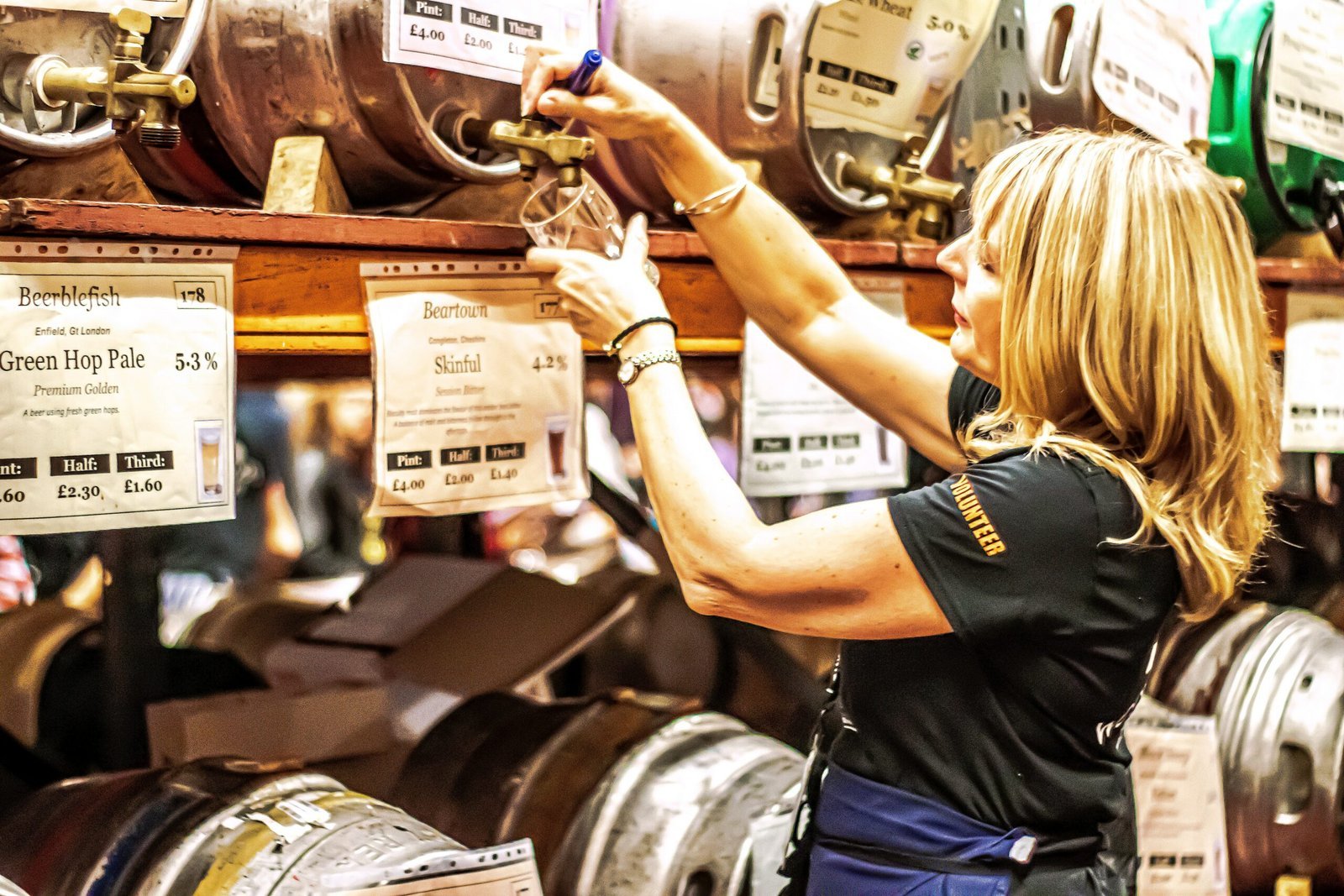
History and Significance of Oktoberfest
Oktoberfest, known globally as an emblematic celebration of Bavarian culture, has its origins deeply rooted in a royal wedding. The history of Oktoberfest dates to October 12, 1810, when Crown Prince Ludwig, who later became King Ludwig I, married Princess Therese of Saxe-Hildburghausen. The citizens of Munich were invited to partake in the festivities held in the fields in front of Munich’s city gates, named “Theresienwiese” in honor of the princess. The initial celebration featured a grand horse race, marking the inception of what was to become an annual tradition.
As the years progressed, the festival evolved far beyond its equestrian roots. By the late 19th century, it had transformed into a fairground featuring amusement rides, games, and most notably, beer. The introduction of beer tents and halls fostered a convivial atmosphere centered around Bavaria’s famous brewing tradition. Breweries began setting up large beer tents to accommodate the ever-growing number of attendees, thus solidifying Oktoberfest as a quintessential beer festival.
Oktoberfest’s cultural significance extends beyond the consumption of beer. It reflects Bavarian heritage and traditions, including music, cuisine, and traditional attire such as lederhosen and dirndls. The festival serves as a living museum of Bavarian customs, presenting an opportunity for visitors to immerse themselves in this regional legacy. Over the years, key changes have shaped the festival, including the lengthening of its duration to run up to 18 days, and the inclusion of modern attractions while keeping traditional elements intact.
Today, Oktoberfest is a global phenomenon that attracts millions of visitors annually from all over the world. Each year, Munich welcomes tourists who gather to celebrate Bavarian culture, enjoy traditional music, and of course, indulge in the unique varieties of Bavarian beer. This blend of historical richness and contemporary appeal ensures Oktoberfest remains not only a monumental cultural event in Germany but also a worldwide symbol of festivity and heritage.
What to Expect at Oktoberfest
Oktoberfest in Munich is a grand celebration that offers a deep dive into Bavarian culture, spanning 16 to 18 days from late September to the first weekend of October. Known as the world’s largest beer festival, visitors can anticipate a vibrant array of attractions that ensure an unforgettable experience.
The heart of Oktoberfest lies in its massive beer tents, each boasting a distinctive ambiance, live music, and exclusive beer varieties from Munich’s traditional breweries. The renowned Hofbräu tent, for instance, is famous for its lively and international crowd, gigantic liters of beer, and rambunctious sing-along atmosphere. In contrast, the Hacker-Pschorr tent, often referred to as “Bavaria Heaven,” offers a more traditional vibe with its beautiful decor and classic Bavarian tunes.
No Oktoberfest experience is complete without indulging in traditional Bavarian cuisine. Mouthwatering treats such as giant pretzels (Brez’n), savory sausages (Würstl), and succulent roasted chicken (Hendl) are ubiquitous across food stalls and beer tents. For those with a sweet tooth, caramelized nuts and apple strudel are must-try delicacies.
In addition to the culinary and beer delights, Oktoberfest brims with other attractions. The opening parade, which features horse-drawn beer wagons, traditional costume displays, and marching bands, is a mesmerizing spectacle. Amusement rides, from classic carousels to modern roller coasters, provide adrenaline-filled fun for all ages. Various game stalls offer the chance to win charming souvenirs, adding a playful element to the festivity.
Navigating the festival grounds can be hectic due to the influx of visitors. It’s crucial to plan visits to highly popular tents ahead of time, ideally during weekdays or early in the day to avoid peak crowds. Attendees should also familiarize themselves with entrance points and restroom locations to streamline their experience. Ultimately, strategic planning ensures the most effective way to bask in the infectious joy and rich traditions of Oktoberfest.
Dressing for Oktoberfest: Traditional Attire
Oktoberfest in Munich is not just about beer; it is also a vibrant celebration of Bavarian culture, which is vividly displayed through traditional attire. For men, the quintessential Oktoberfest outfit is the lederhosen. Historically, these leather shorts were worn by German and Austrian peasants due to their durable and practical nature. Characterized by their suspenders and embroidered designs, lederhosen come in various lengths and styles, making them both sturdy and stylish. Accompanying the lederhosen is often a checkered or white shirt, long socks, and sturdy shoes, completing the iconic look.
Women celebrate Oktoberfest by donning the beautiful dirndl. The dirndl comprises a bodice, blouse, full skirt, and apron. Originating in the Alps, this dress was traditionally worn by Alpine peasants. The dirndl comes in a variety of designs, ranging from simple and understated to elaborately decorated with intricate patterns and embroidery. The colorful and layered outfit not only honors tradition but also allows for personal expression.
When attending Oktoberfest, embracing local customs through attire is essential in fully immersing oneself in the festival’s spirit. For those traveling to Munich, there are numerous shops throughout the city where traditional outfits can be purchased or rented. Popular locations include Viktualienmarkt and Kaufingerstraße, both of which offer a wide range of options at various price points. Additionally, if you prefer to be well-prepared before arriving, numerous online retailers specialize in authentic German clothing. This ensures you’ll be festival-ready upon landing in Munich.
Comfort is key when dressing for Oktoberfest, considering the event’s duration and the extensive walking involved. Selecting well-fitting attire, breathable fabrics, and supportive footwear can significantly enhance your experience. An essential tip is to dress in layers, as September weather in Munich can be unpredictable.
Embracing the tradition of wearing lederhosen and dirndls not only displays respect for Bavarian culture but also adds to the joyous and authentic atmosphere that defines Oktoberfest. Whether buying, renting, or preparing in advance, dressing the part will ensure you’re both comfortable and culturally connected at this iconic beer festival.
Planning Your Trip to Oktoberfest
Attending Munich’s Oktoberfest is a unique experience that requires careful planning. Given the popularity of this iconic beer festival, securing accommodation should be one of your first priorities. It is advisable to book your lodging six to twelve months in advance, as central hotels and hostels fill up rapidly during the event. If you can’t find central lodging, consider accommodations in surrounding neighborhoods with good public transport links to Theresienwiese, the festival ground.
Traveling to Munich for Oktoberfest can be done effortlessly from various points of origin. Munich’s Franz Josef Strauss International Airport offers direct flights from many international locations. For those traveling domestically or from neighboring countries, the Deutsche Bahn (German Railways) operates frequent and reliable train services. Once in Munich, utilize the city’s efficient public transport system, including U-Bahn (subway), S-Bahn (commuter trains), trams, and buses for convenient travel to the festival and other tourist sites.
Budgeting for Oktoberfest involves understanding the costs associated with food, drinks, and entertainment. On average, expect to spend between €10-€12 per liter of beer, and approximately €5-€15 for traditional Bavarian meals such as pretzels, sausages, and roast chicken. Additionally, some tents have entry fees, which can vary. To manage costs, consider bringing cash, as some venues do not accept cards, and account for miscellaneous expenses, such as souvenirs and travel fares.
Health and safety are paramount during Oktoberfest. The high alcohol content of Bavarian beer requires visitors to drink responsibly and stay hydrated; water stations are available throughout the grounds. To avoid overconsumption, pace your drinking and enjoy the festivities progressively. It’s also crucial to be mindful of your belongings, as crowded spaces can attract pickpockets. Emergency medical services are readily available on-site should you need assistance.
Understanding local etiquette enhances your Oktoberfest experience. Enthusiastically participate in the traditional dress code of dirndls for women and lederhosen for men if you can. Learn a few basic German phrases—locals appreciate the effort. Lastly, be respectful to the tent staff and fellow visitors, ensuring a pleasant atmosphere for everyone. Following these guidelines, visitors can maximize their enjoyment and safety at Germany’s legendary Oktoberfest.

